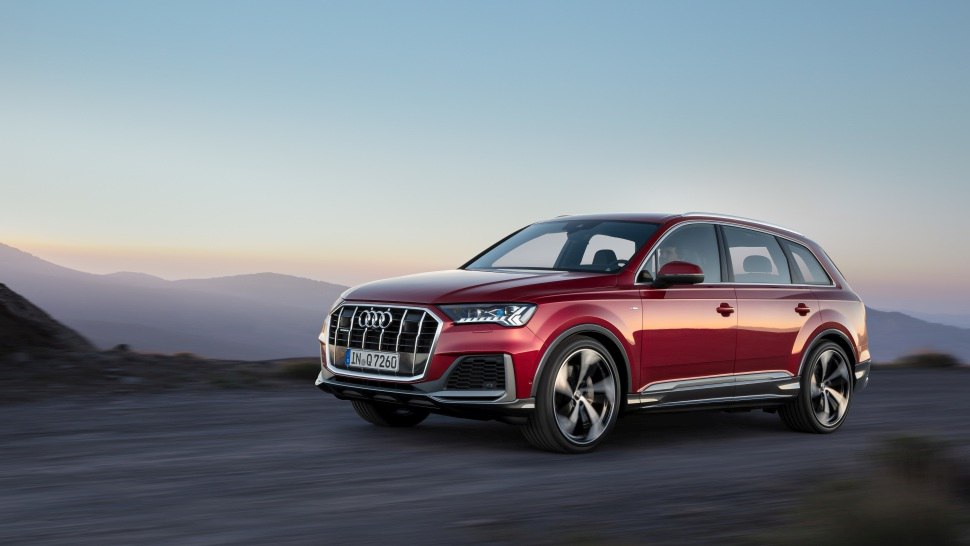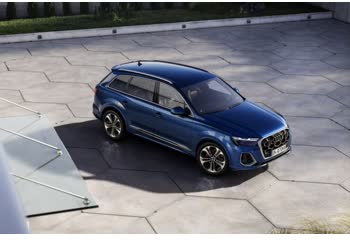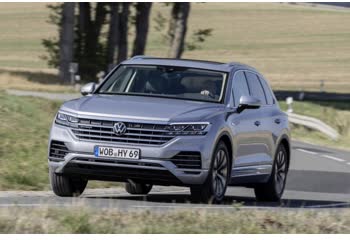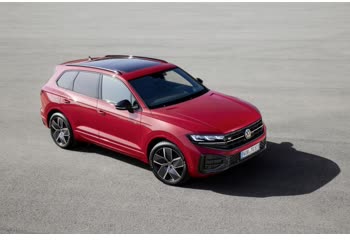Everything you need to know about specifications and performance - Audi Q7 2019 - 60 TFSI e V6 (456 Hp) Plug-in Hybrid quattro tiptronic

Overview:
What is the engine capacity of a Audi Q7 2019?
The engine capacity of the Audi Q7 2019 is 2995.
Audi Q7 2019 How many horsepower?
The engine power of the Audi Q7 2019 is 340 Hp @ 5200-6400 rpm..
What is the Audi Q7 2019 engine?
Audi Q7 2019 engine is DCBE. (Click to see other cars using the same engine)
How powerful is the electrical system in the Audi Q7 2019?
The power of the electrical system in the Audi Q7 2019 is 456 Hp hp.
How much gasoline does a Audi Q7 2019 consume?
The Audi Q7 2019 consumes 2.8-3 liters of gasoline per 100 km
General:
Brand: Audi
Model: Q7
Generation: Q7 (Typ 4M, facelift 2019)
Modification (Engine): 60 TFSI e V6 (456 Hp) Plug-in Hybrid Quattro Tiptronic
Start of production: December, 2019
End of production: September, 2020
Powertrain Architecture:Plug-In Hybrid Electric Vehicles (PHEVs)
Body type:Sports Utility Vehicle (SUV)
Seats: 5
Doors: 5
Engine:
Engine systems: Start & Stop System
Power: 340 hp @ 5200-6400 rpm.
Power per litre: 113.5 hp/l
Torque: 450 nm @ 1340-5300 rpm.
Engine Model/Code:DCBE
Engine displacement: 2995
Number of cylinders: 6
Engine configuration: V-engine
Number of valves per cylinder: 4
Fuel injection system: Direct injection
Engine aspiration: Turbocharger, Intercooler
Valvetrain: DOHC
Engine oil capacity: 7.2 l
Coolant: 10 l
Engine layout: Front, Longitudinal
Cylinder Bore: 84.5 mm
Piston Stroke: 89 mm
Compression ratio: 11.2:1
Performance:
Fuel Type: Petrol / electricity
Fuel consumption (economy) - combined (NEDC): 2.8-3 l/100 km
Fuel consumption (economy) - combined: 2.8-3 l/100 km
Emission standard: Euro 6d-TEMP-EVAP-ISC
Acceleration 0 - 100 km/h: 5.7 sec
Acceleration 0 - 62 mph: 5.7 sec
Maximum speed: 240 km/h
Weight-to-power ratio: 5.4 kg/Hp, 185.4 Hp/tonne
Weight-to-torque ratio: 3.5 kg/Nm, 284.6 Nm/tonne
Max speed (electric): 135 km/h
Acceleration 0 - 60 mph: 5.4 sec
Electric system:
Gross battery capacity: 17.3 kWh
Battery technology: Lithium-ion (Li-Ion)
Battery location: Under the trunk
System power: 456 hp
System torque: 700 nm
All-electric range: 41-42 km
Electric motor power: 128 hp
Electric motor Torque: 350 nm
Average Energy consumption: 22.2-22.9 kWh/100 km
Electric motor location: Between the combustion Engine and the transmission
All-electric range (WLTP): 41-42 km
Battery weight: 202 kg
Battery voltage: 308 V
Average Energy consumption (NEDC): 22.2-22.9 kWh/100 km
Recuperation output: 80 kW
Space:
Kerb Weight (kg): 2460
Max. weight (kg): 3145
Max. roof load: 100 kg
Max load (kg): 685
Trunk (boot) space - minimum: 650 l
Permitted trailer load with brakes (12%): 3500 kg
Fuel tank capacity: 75 l
Permitted trailer load without brakes: 750 kg
Permitted towbar download: 140 kg
dimensions:
Length: 5063 mm
Width: 1970 mm
Height: 1741 mm
wheelbase: 2995 mm
Width including mirrors: 2212 mm
Front track: 1679 mm
Rear (Back) track: 1690 mm
Front overhang: 977 mm
Rear overhang: 1091 mm
Minimum turning circle (turning diameter): 12.5 m
Powertrain, Suspension and Brakes:
Drivetrain Architecture: The Internal combustion Engine (ICE) and the electric motor permanently drive the four wheels of the car with the ability to work in full electric or mixed mode.
Drive wheel: All wheel drive (4x4)
Number of gears and type of gearbox: 8 gears, automatic transmission Tiptronic
Front brakes: Ventilated discs
Rear brakes: Ventilated discs
Assisting systems: ABS (Anti-lock braking system)
Steering type: Steering rack and pinion
Power steering: Electric Steering
Tires size: 255/55 R19; 285/45 R20; 285/40 R21; 285/35 R22
Wheel rims size: 8.5J x 19; 9J x 20; 9.5J x 21; 10J x 22
Front suspension: Independent multi-link suspension, Transverse stabilizer
Rear suspension: Independent multi-link suspension, Transverse stabilizer
See also

Other generation.
Its production began in 2024 until Now

Same engine. (DCBE).
Its production began in 2020 until 2022

Same engine. (DCBE).
Its production began in 2023 until Now
Write a comment